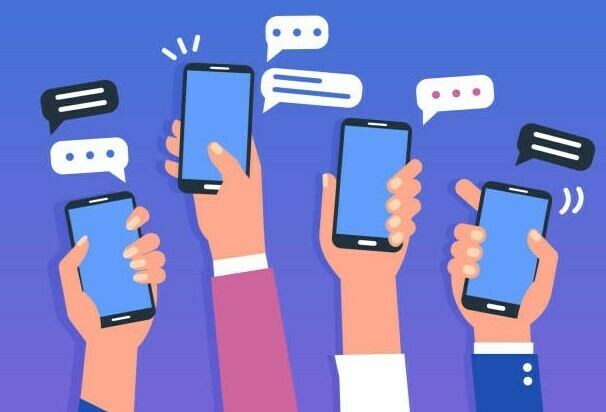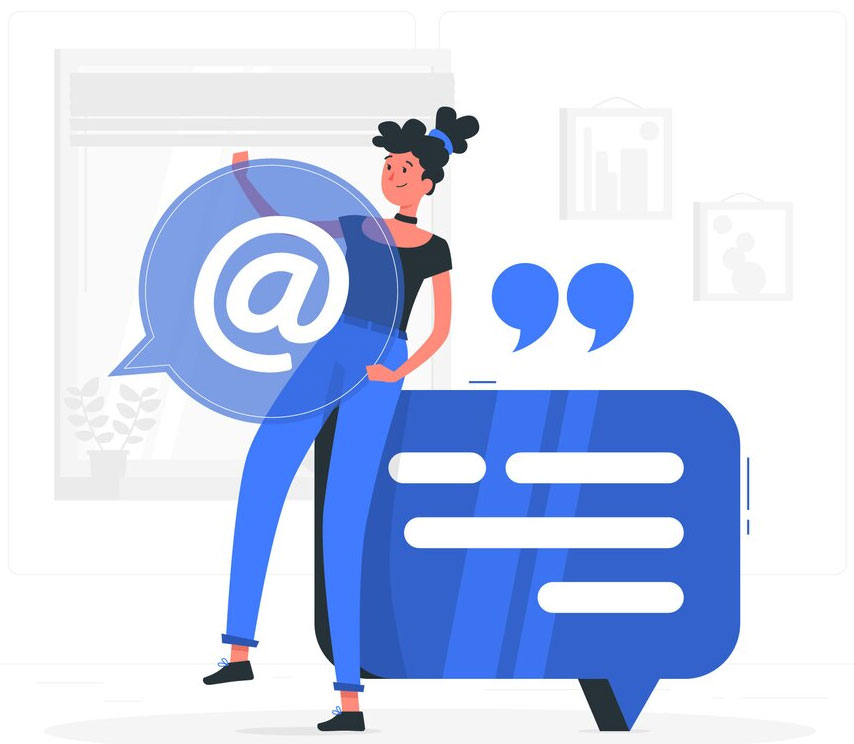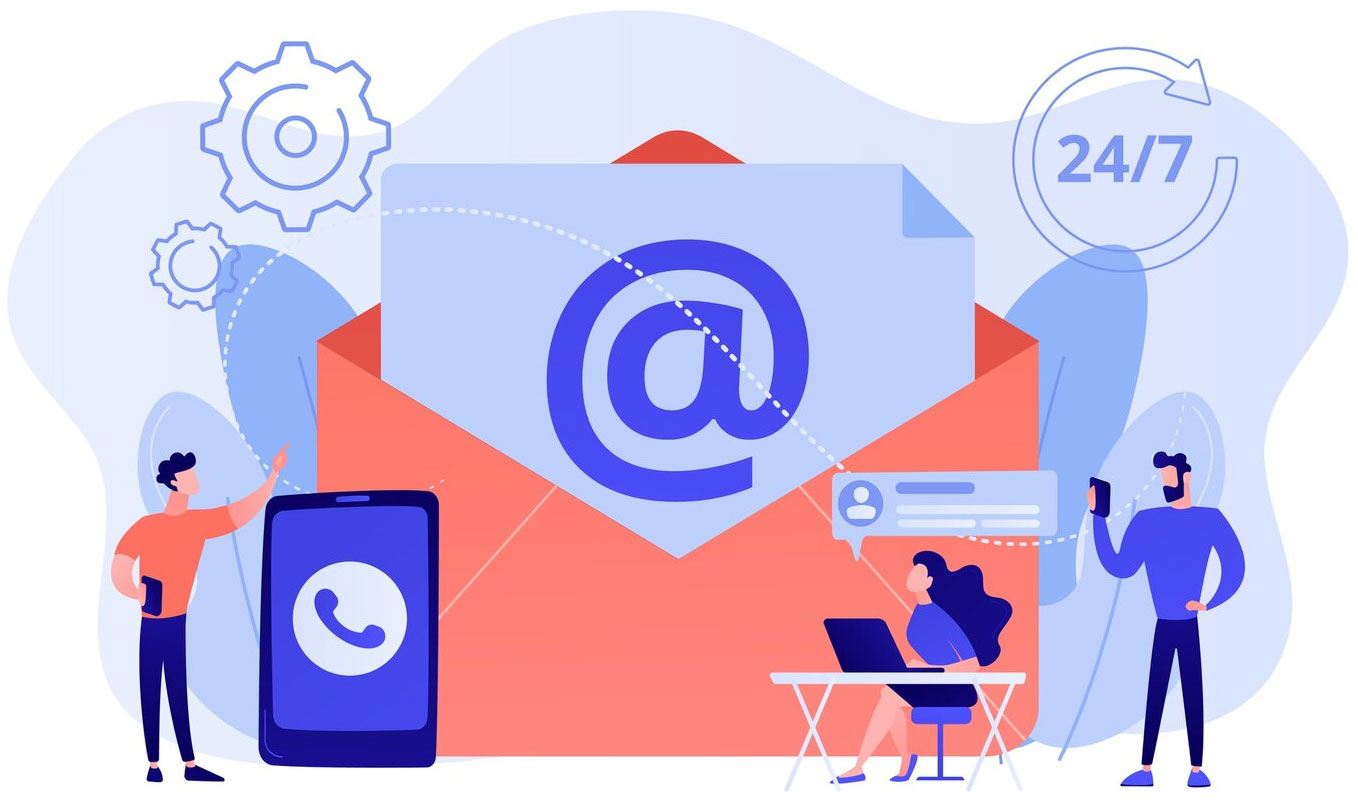In today's rapidly changing digital marketing landscape, businesses are constantly exploring innovative methods to engage their audience. Combining the strengths of SMS and email marketing is a strategy that can deliver exceptional results. Each channel offers distinct advantages, and when used together, they create a cohesive and effective communication strategy. This guide explores how to seamlessly integrate SMS and email marketing to enhance your campaigns, increase customer engagement, and maximize your ROI.
Understanding the Strengths of SMS and Email Marketing
Before going into the strategies, it’s key to understand the individual strengths of SMS and email marketing.

SMS Marketing:
- High Open Rates: SMS messages boast an impressive open rate of around 98%, often within minutes of delivery. This makes SMS an excellent channel for time-sensitive promotions and urgent updates.
- Direct and Immediate: SMS messages are delivered directly to the user's mobile device, making them immediate and personal. This direct delivery ensures that the message reaches the intended recipient without any intermediaries or delays.
- High Engagement: The nature of SMS, with its concise and direct messaging, allows businesses to communicate their messages efficiently and effectively. When a customer receives an SMS, it typically comes with a notification that demands immediate attention.
Email Marketing:
- Rich Content: One of the primary advantages of email marketing is its capacity to incorporate various types of media. Emails can seamlessly include images, which can enhance the visual appeal and help illustrate points more effectively. For example, product photos, infographics, and branded graphics can capture the reader's attention and make the content more engaging. Learn more about email marketing content.
- Cost-Effective: Email marketing is generally more cost-effective for reaching a large audience. It requires minimal investment compared to traditional marketing channels, such as print or broadcast media, making it accessible for businesses of all sizes.
- Segmentation and Personalization: Email platforms provide robust tools for segmenting audiences and personalizing messages, which can significantly improve engagement. These tools allow marketers to divide their email lists into specific segments based on various criteria such as demographics, purchase history, or engagement levels. Explore email segmentation strategies.
Why Combine SMS and Email Marketing Campaigns?
Combining SMS and email marketing can enhance your marketing efforts in several ways: Reinforced Messaging: Send your message through both channels to ensure it reaches the audience. By leveraging the strengths of SMS and email marketing, businesses can create a cohesive and multi-channel communication strategy that maximizes reach and engagement. Discover multi-channel marketing benefits. Complementary Strengths: Leverage SMS's immediate nature and email's rich content capabilities. By integrating these two channels, businesses can create a dynamic and effective marketing strategy that plays to each medium's strengths. Improved Customer Journey: Integrating both channels to provide a consistent experience creates a seamless customer journey. By coordinating SMS and email marketing efforts, businesses can guide customers through each stage of the journey with timely and relevant communications. Check out customer journey strategies.

Building a Unified Strategy
To successfully integrate SMS and email marketing, follow these steps:
- Define Your Goals: Establish clear objectives for your integrated campaign, such as increasing sales, boosting engagement, or improving customer retention. Clearly defined goals will guide your strategy and help measure its success.
- Segment Your Audience: Use data to segment your audience based on preferences, behavior, and demographics. This will help you tailor your messages more effectively. By understanding the unique characteristics and needs of different segments, you can create personalized and relevant content that resonates with each group.
- Craft Complementary Messages: Ensure that your SMS and email messages complement each other. For instance, use SMS for immediate alerts and follow up with detailed information via email. This complementary approach leverages the strengths of each channel, providing a balanced communication strategy that meets various customer needs.
- Timing is Key: Schedule your messages strategically. Send an SMS at a high-engagement time and follow up with an email shortly after. This timing strategy maximizes the likelihood of your audience seeing and interacting with your messages.
- Use Consistent Branding: Maintain consistent branding across both channels to reinforce brand recognition and trust. This consistency includes using the same logos, color schemes, tone of voice, and messaging style in both your SMS and email communications.
Examples of Successful Integration
- Event Reminders: • SMS: Send a short reminder about the event date and time. • Email: Follow up with detailed information about the event, including an agenda and what attendees need to know.
- Product Launches: • SMS: Announce the product launch with a link to learn more. • Email: Provide an in-depth overview of the product features, benefits, and special offers.
- Abandoned Cart Reminders: • SMS: Notify customers of their abandoned cart with a prompt to complete their purchase. • Email: Send a detailed email with product images, descriptions, and an incentive to return and complete the purchase.
- Seasonal Promotions: • SMS: Send a quick alert about the start of a seasonal sale with a link to shop now. • Email: Provide a comprehensive email showcasing featured products, exclusive discounts, and gift ideas related to the seasonal promotion.
- Appointment Confirmations: • SMS: Confirm the appointment time and date with a brief reminder. • Email: Follow up with an email including detailed information about the appointment, what to bring, and preparation tips.
- Survey Requests: • SMS: Send a short message asking customers to participate in a survey, with a direct link to the survey. • Email: Provide a more detailed explanation of the survey’s purpose, the time it will take, and any incentives for completing it.
- Loyalty Program Updates: • SMS: Notify customers of their current points balance or recent points earned. • Email: Send a detailed breakdown of their loyalty program status, including ways to earn more points and redeem rewards.
- Special Announcements: • SMS: Send an urgent message about a special announcement, like a company milestone or important news. • Email: Provide a detailed email with background information, implications of the announcement, and any next steps for the audience.
- Webinar Invitations: • SMS: Send a brief invitation with the date, time, and a link to register for the webinar. • Email: Follow up with a detailed email that includes the webinar agenda, speaker bios, and benefits of attending. Order
- Confirmations and Shipping Updates: • SMS: Notify customers that their order has been confirmed and provide a tracking link when it ships. • Email: Provide a detailed order confirmation email with a receipt, order summary, and estimated delivery date, followed by a shipping confirmation email with tracking information.
- Customer Service Follow-ups: • SMS: Send a quick thank you message after resolving a customer service issue. • Email: Follow up with a detailed email summarizing the resolution, providing any necessary documents or links, and asking for feedback on the service experience.
- Flash Sales: • SMS: Announce a flash sale with a limited-time discount code. • Email: Provide an email with more details about the flash sale, including product highlights, sale duration, and terms and conditions.
- Subscription Renewals: • SMS: Remind customers about their upcoming subscription renewal date. • Email: Follow up with an email outlining the benefits of continuing the subscription, any changes to the service, and how to renew.
- Welcome Series for New Subscribers: • SMS: Send a welcome message thanking new subscribers for joining and providing a special offer. • Email: Follow up with a detailed welcome email series introducing your brand, products, and how to make the most of your subscription.
- Event Registration Confirmations: • SMS: Confirm registration and provide a quick thank you message. • Email: Send a detailed registration confirmation email with event details, what to expect, and any preparatory information.
Tools and Platforms for Integration
Several tools and platforms can help you integrate SMS and email marketing seamlessly:
- Integrated Marketing Platforms: Platforms like FireDrum, HubSpot, Active Campaign, and Klaviyo offer integrated solutions for managing both SMS and email campaigns.
- Automation Tools: Use automation tools to trigger SMS and email messages based on user actions, such as form submissions or purchases.
- Analytics and Reporting: Leverage analytics tools to track the performance of your integrated campaigns, measure ROI, and make data-driven decisions.

Best Practices for Integrating SMS and Email Marketing
- Obtain Proper Consent: Ensure you have the necessary permissions from your audience to send SMS and email messages. This helps maintain compliance with regulations such as GDPR and CAN-SPAM and builds trust with your audience. Clearly communicate how you will use their contact information and provide easy options for them to opt in or opt out of your communications.
- Personalize Your Messages: Personalization can significantly enhance engagement. Use the data you have to personalize both SMS and email messages. Address recipients by their names, tailor content based on their preferences and past interactions and segment your audience to deliver more relevant and meaningful messages. Personalized messages are more likely to capture attention and drive action.
- Test and Optimize: Continuously test different elements of your campaigns, such as timing, messaging, and segmentation, to find what works best for your audience. Conduct A/B tests to compare variations and analyze performance metrics to determine the most effective strategies. Regularly optimizing your campaigns ensures that you are adapting to your audience’s changing behaviors and preferences, leading to improved results over time.
- Monitor Deliverability: Ensure your messages are being delivered by monitoring bounce rates and spam complaints. Use tools to maintain high deliverability rates, such as validating email addresses, avoiding spammy language, and adhering to best practices for sender reputation. Keeping an eye on these metrics helps you identify and address any issues that may prevent your messages from reaching your audience, ensuring your communications are effective and reliable.
Measuring the Success of Your Integrated Campaigns
To measure the success of your integrated SMS and email marketing campaigns, consider the following metrics:
- Open and Click-Through Rates: Track the open and click-through rates for both SMS and email messages to gauge initial engagement.
- Conversion Rates: Measure the conversion rates to determine how many recipients took the desired action, such as making a purchase or signing up for an event.
- ROI: Calculate the return on investment by comparing the revenue generated from your campaigns to the costs involved.
- Customer Feedback: Collect feedback from your customers to understand their preferences and experiences with your messages.
Challenges and How to Overcome Them
- Managing Permissions: Ensure compliance with regulations like GDPR and CAN-SPAM. Use double opt-in processes to obtain clear consent from your audience. Keep records of consent and provide easy options for recipients to update preferences or unsubscribe.
- Avoiding Message Fatigue: Be mindful of message frequency. Balance SMS and email communications to avoid overwhelming your audience. Monitor engagement metrics and adjust frequency accordingly. Offer recipients control over how often they hear from you.
- Data Integration: Integrate data systems to ensure a seamless flow of information between SMS and email platforms. Use APIs or integrated marketing platforms for synchronization. Maintain data accuracy and security and use automation tools to streamline data management.
Future Trends in SMS and Email Marketing
- AI and Machine Learning: AI and machine learning can enhance personalization and segmentation, helping you deliver more relevant messages to your audience. These technologies analyze data to predict customer behavior and tailor content accordingly.
- Interactive Content: Incorporate interactive elements, such as polls or surveys, in your emails and SMS to engage your audience and gather valuable insights. Interactive content boosts engagement and provides feedback.
- Omnichannel Marketing: As customers interact with brands across multiple channels, integrating SMS and email with other channels like social media and push notifications will become increasingly important. A unified approach ensures a seamless customer experience. Integrating SMS and email marketing is a powerful strategy that can significantly enhance your marketing efforts. By leveraging the strengths of both channels, you can create a more engaging and effective communication strategy. Remember to define clear goals, segment your audience, craft complementary messages, and use the right tools to execute your campaigns. With careful planning and execution, you can achieve impressive results and build stronger relationships with your customers.


